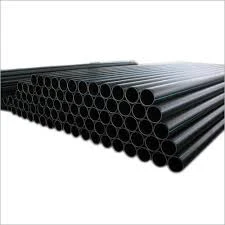Oct . 16, 2024 02:58 Back to list
Choosing the Right Pipe Clamp Fittings for Secure Installations
Understanding Pipe Clamp Fittings Essential Components for Plumbing and Construction
Pipe clamp fittings are vital components in various plumbing and construction applications. Through their versatile designs and robust materials, these fittings provide secure connections for pipes, playing a crucial role in maintaining the integrity of plumbing systems. Whether you’re a DIY enthusiast or a professional contractor, understanding the uses, advantages, and types of pipe clamp fittings is essential for any project involving pipe installation or repair.
What are Pipe Clamp Fittings?
Pipe clamp fittings are mechanical devices used to fasten, secure, or connect pipes together. They create a stable connection while allowing for flexibility and movement, thereby minimizing stress on the joints. These fittings are made from materials such as stainless steel, plastic, and rubber, chosen for their durability and resistance to corrosion.
Applications of Pipe Clamp Fittings
Pipe clamp fittings are used in a variety of applications
1. Plumbing In residential and commercial plumbing systems, these fittings help connect water supply pipes or drain lines securely, ensuring leak-free operations.
2. HVAC Systems In heating, ventilation, and air conditioning systems, pipe clamps help mount and support ductwork, pipes, and tubing, preventing vibration and movement.
3. Industrial Settings In factories and plants, pipe clamps are essential for managing various pipelines, supporting heavy hoses, and securing gas or liquid conduits.
4. Construction Projects They are also used in construction to provide temporary or permanent support to structures, scaffolding, and piping systems.
Advantages of Using Pipe Clamp Fittings
1. Enhanced Stability Pipe clamp fittings ensure that pipes remain immobile, reducing the risk of damage due to vibrations or pressure changes.
pipe clamp fittings

2. Easy Installation Most pipe clamp fittings are designed for quick and easy installation. With minimal tools, users can achieve a secure connection, saving both time and labor costs.
3. Versatility These fittings come in various sizes and configurations, making them suitable for numerous applications in different industries.
4. Cost-Effectiveness Given their longevity and low-maintenance requirements, pipe clamp fittings represent a cost-effective solution for pipe management.
5. Resistance to Corrosion Many pipe clamps are manufactured from materials that resist rust and degradation, which is crucial for longevity, especially in plumbing and outdoor settings.
Types of Pipe Clamp Fittings
There are several types of pipe clamp fittings, including
1. Single-Pipe Clamps Designed to hold a single pipe securely, these clamps are typically used for mounting applications where pipes need stability.
2. Double-Pipe Clamps Used to secure two pipes parallel to each other, these fittings provide additional support and are common in plumbing and HVAC systems.
3. Hose Clamps These clamps are typically used to secure hoses to connectors. They are commonly employed in automotive and machinery applications.
4. Adjustable Clamps These fittings can be loosened or tightened as needed, offering flexibility in installation and maintenance.
Conclusion
In conclusion, pipe clamp fittings are essential components that serve a wide range of functions across various industries. Their ability to provide secure connections, enhance stability, and allow for flexible installation makes them indispensable in plumbing, HVAC, and construction projects. By understanding the different types of pipe clamp fittings and their applications, individuals and contractors can make informed decisions, ensuring the success and durability of their projects. Whether you are replacing old fittings or installing a new system, selecting the right pipe clamp fitting is crucial for achieving optimal results.
-
High-Quality PPR Pipes and Fittings Durable ERA PPR & PVC PPR Solutions
NewsJul.08,2025
-
Black HDPE Cutting Board - Durable, Non-Porous & Food Safe HDPE Plastic Cutting Board
NewsJul.08,2025
-
High-Quality CPVC Panel Durable HDPE & PVC Panels Supplier
NewsJul.08,2025
-
Double PE Welding Rod Supplier - High Strength, Durable & Versatile Welding Solutions
NewsJul.07,2025
-
High-Quality PVC-O Pipe Supplier Durable 75mm PVC Pipe & Connections Leading PVC Pipe Company
NewsJul.07,2025
-
HDPE Drainage Pipe Supplier – Durable & Corrosion-Resistant Solutions
NewsJul.06,2025

